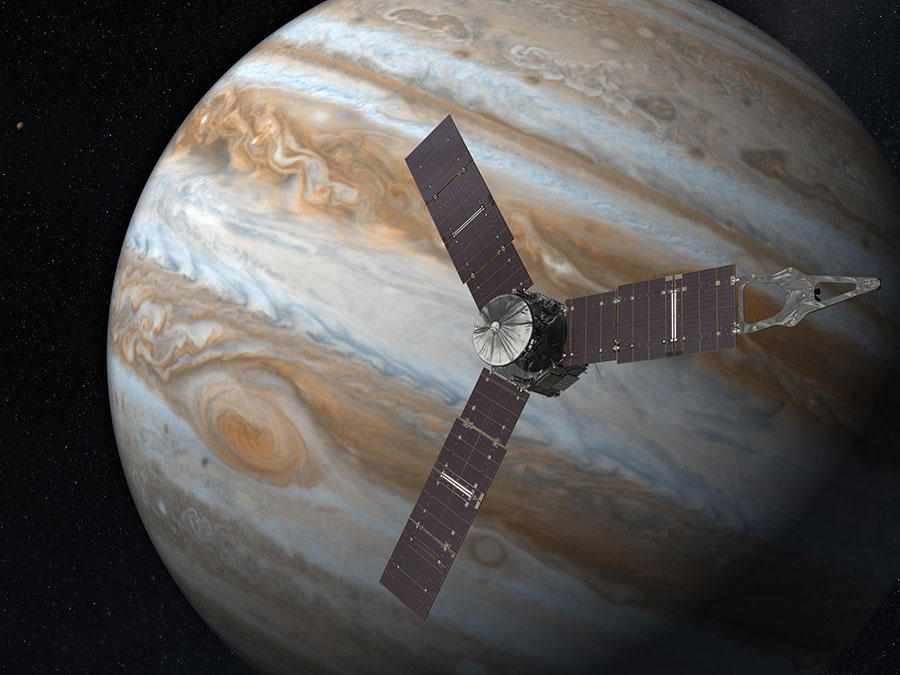NASA announced Friday that due to risks of a misfire, its Juno Spacecraft will remain in its 53-days orbit of Jupiter for what is left of the mission, instead of shifting to a shorter orbit of 14 days, as it was previously scheduled.
This is not the first time that NASA’s Juno has troubles orbiting Jupiter. However, they decided that it was better for Juno to continue in the longer orbit to avoid complications given the fact that through that orbit, Juno is less exposed to the planet’s radiation belts. Despite the change, NASA also expressed they would do some extra work that wasn’t on schedule, such as exploring the magnetosphere of Jupiter.

“This is significant,” Said Scott Bolton Juno principal investigator from Southwest Research Institute in San Antonio “because radiation has been the main life-limiting factor for Juno.”
Juno will remain in the 53-days orbit
NASA decided on Friday to keep Juno spacecraft traveling on a larger orbit because of the complications that may come with a shorter orbit. The agency had scheduled a shift for Juno to a shorter, 14-days orbit. However, they decided not to make that change, because that way Juno would be more exposed to the radiation of Jupiter.
The 53-days orbit is practically elliptical, it takes Juno within 2600 miles from the atmosphere to five million miles away from it. The decision to keep Juno in it will minimize the chances of something going wrong. Juno had already run into troubles while orbiting Jupiter.
On October, NASA delayed an orbit because two helium check valves were not working as they should have. After that incident, another main engine burn occurred.
However, the spacecraft has completed two orbits ever since. The last one was completed on February 2. Scientists and engineers at the Jet Propulsion Laboratory in Pasadena, California, could not find a fix that would not risk Juno’s scientific goals.
In spite of the recent decision from NASA, the agency said that they will be able to do some extra work. For instance, they will be exploring the magnetosphere of the planet.
The agency said that the current 53-day orbit should not jeopardize the scientific mission and that they actually consider the extra time Juno is taking as a “bonus”.
“The science opportunities are truly better in the longer orbit,” said Scott Bolton.
Juno is set to fly through July 2018
NASA’s Juno spacecraft arrived at Jupiter last July. The project cost about $1.1 billion. Right now, the spacecraft is scheduled to continue flying until July 2018 for 12 additional orbits around Jupiter.
However, the mission planners are considering extending the mission until 2021, or as long as they receive funding. Once it is over, Juno will be de-orbited burning up as it enters into Jupiter’s atmosphere to avoid contamination.
In the longer and current orbit, Juno will approach Jupiter almost as close as it would have in the discarded one. The spacecraft has already taken amazing photos of the planet. The next flyby for Juno will be on march 27,
Source: The Verge
